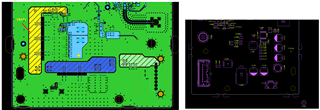In the attached circuit input side is burned along with L100 ferrite bead on the few samples. What could be the reason for burning the parts on the input side alone? Output side of the buck regulator we are getting high impedance between output to GND

Thanks and Regards,
Arumugam.P


